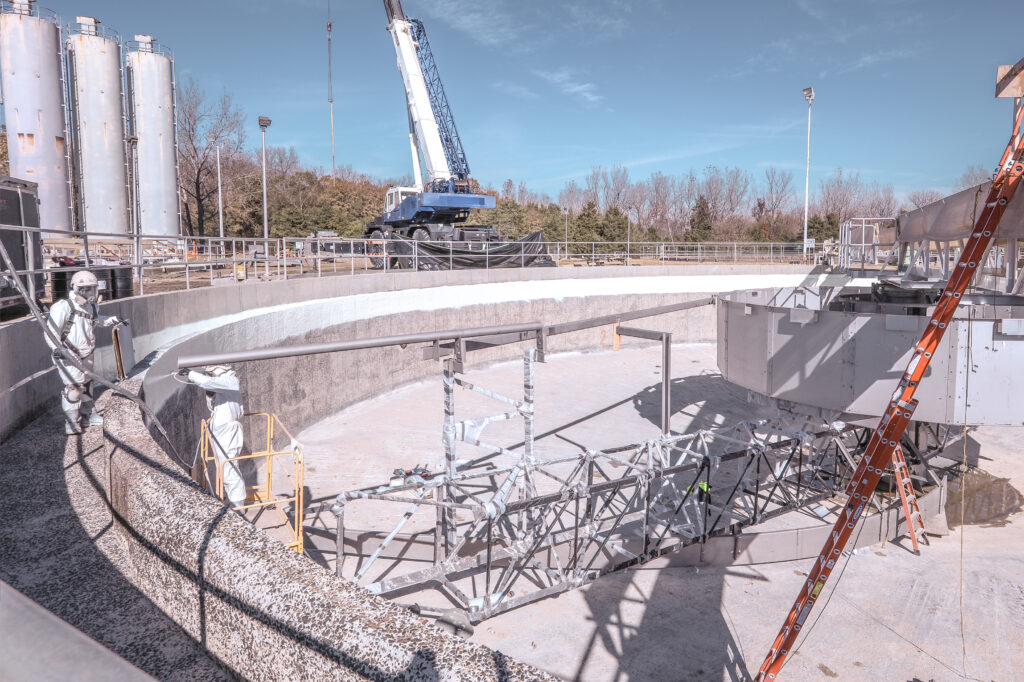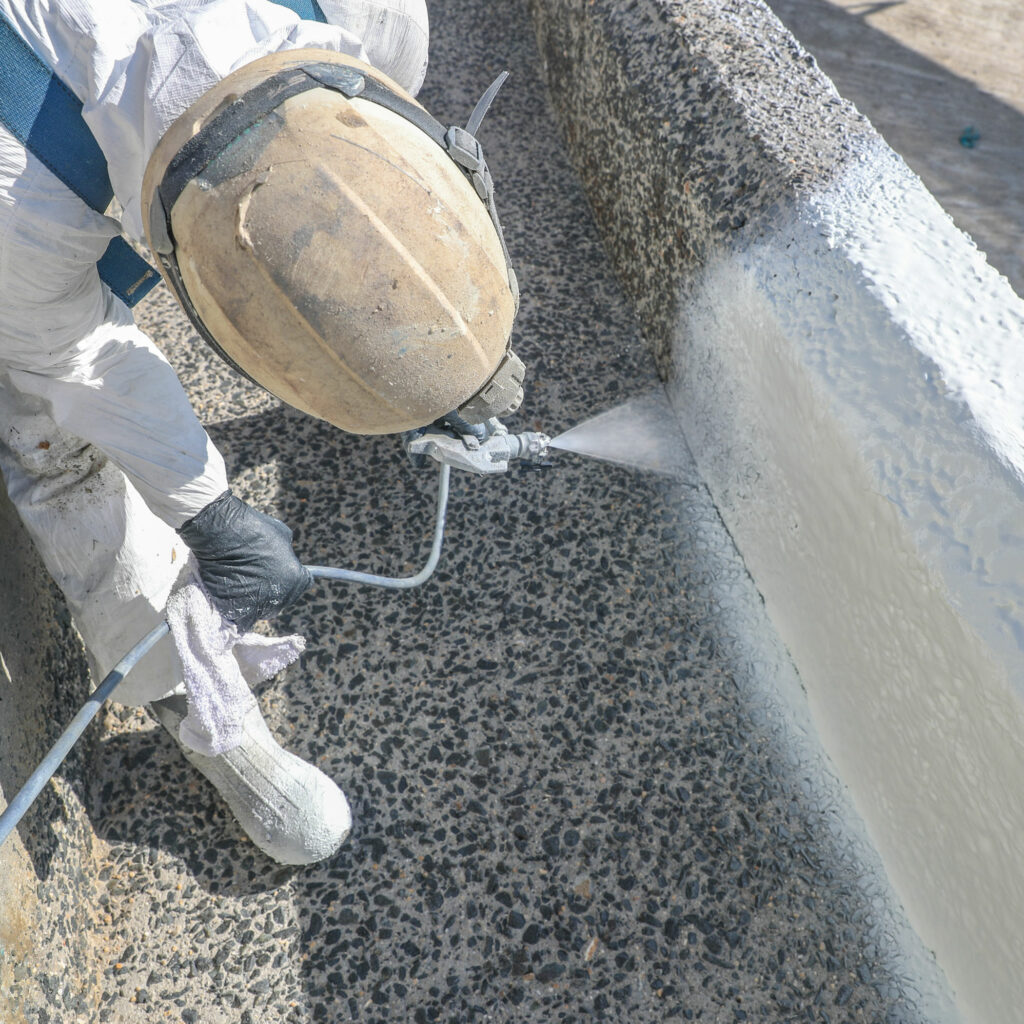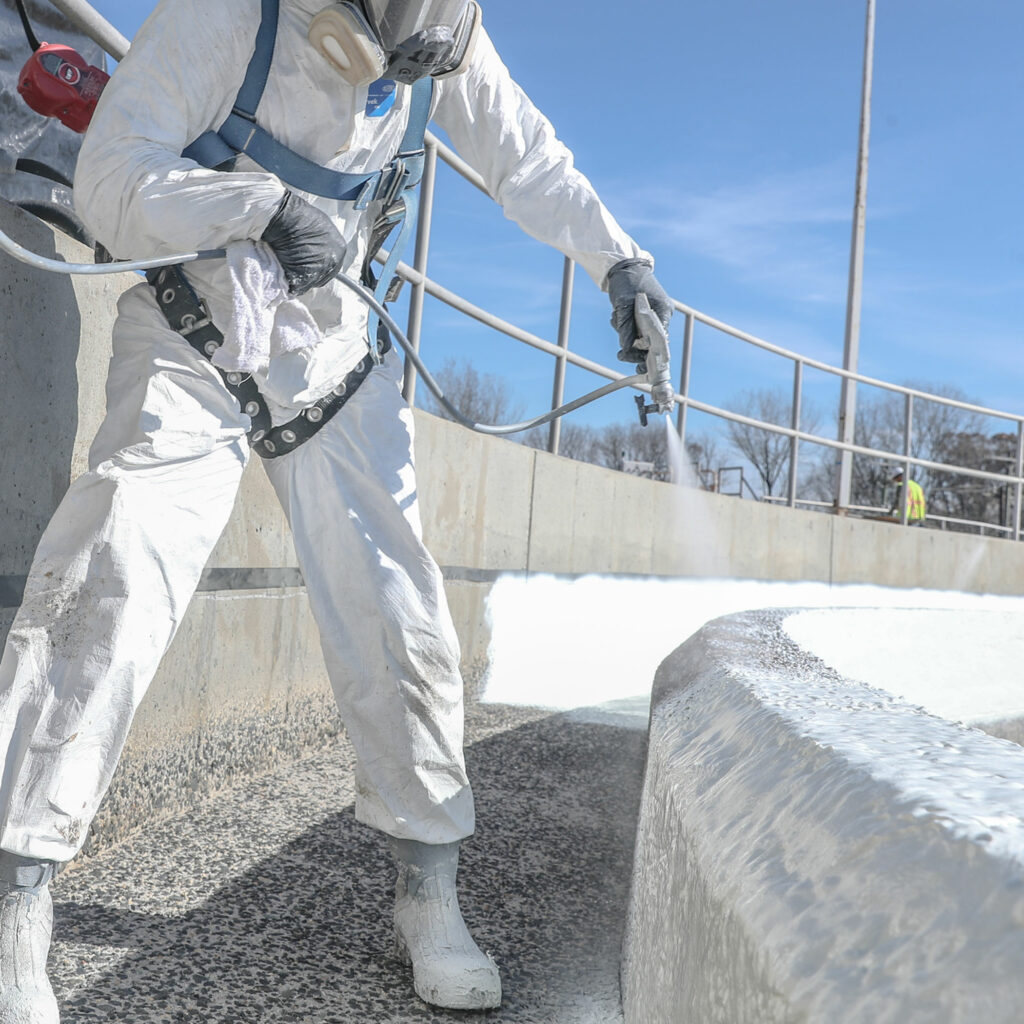Wastewater Infrastructure – When to Replace or Rehabilitate
This post will explore approaches for navigating the decision to replace or rehabilitate your wastewater infrastructure
Written By: JB Conant, AMPP Certified Coatings Inspector
Today’s utilities are responsible for providing high-quality, reliable, and responsive service to their customers. Fulfilling these responsibilities has become difficult with the ongoing challenges of aging infrastructure, stringent regulatory requirements, and budgetary constraints. Utilities need to make the important decision to replace or rehabilitate our vital assets. How should one go about making this decision?
This post provides wastewater infrastructure owners information regarding the best practice on assessing/evaluating assets and important considerations for replacement and rehabilitation. Although difficult, making fact-based decisions for your infrastructure starts here.
Assessment
A thorough condition assessment is always recommended. This may be a part of your long-term asset management program and, if not, should be as it’s a critical first step of this process. The condition assessment provides information to evaluate the asset’s physical condition and functionality, allowing for an estimate of its remaining service life and value. Often utilities engage a third party’s services to complete the assessment and determine costs.
While the process varies depending on the asset type, below are a series of steps typically taken:
- Review available data – What information do you have on the structure (e.g., routine maintenance, performance data, etc.) and what information do you lack?
- Asset Inspection – Once you’ve identified the data you need, have an in-house or third-party inspector gather that information to assess the structure’s condition accurately.
- Data Analysis – That inspection data is then turned into actionable information about your structure’s condition. This data will help you make decisions from a repair to a full system replacement.
Considerations for replacement and rehabilitation
Once you have inspection data, you can identify the evaluation criteria to base your decision. First, let’s define what we consider a rehabilitation. Rehabilitation is a technique that utilizes the existing structure and is not consider what is generally referred to as spot or point repairs. A replacement is a technique where no use of the existing structure is used. Regardless of the option, each has its pros and cons, so developing criteria specific to your project is key.
Below are five common factors typically considered:

Criticality
The risk associated with your wastewater structures’ failure can put this factor at the top of the list. Determine how important this asset is to your overall system. If downtime is unacceptable or failure is more likely, then replacement may be the ideal solution, even if it’s the more expensive option.

Life-cycle costs
This may weigh higher than most if you have an asset that breaks down, requires frequent repair, or operates inefficiently. Review annual costs with repairs and inefficiencies, and then compare that against the costs for rehabilitation or replacement. Depending on the analysis, if rehabilitation expenses are excessive, it may be cheaper to install a new asset that offers more efficient, durable, or provides greater capacity.

Schedule
The time you can afford to keep your structure off-line for either option will weigh heavily. Often, replacement is the most costly and time-consuming of the two options. Rehabilitation methods can offer quick return-to-service providing minimal impact to your overall operations.

Budget
With limited funding, utilities need to maximize their resources and get as much life out of their existing infrastructure as possible. If you are restricted by your budget, you should strongly consider rehabilitation until you can allocate funds for a full replacement. Luckily many rehabilitation methods go far beyond a temporary fix and add valuable service life back to your asset.

Future Growth & New Regulations
Are you expecting population growth in the near future, which would place more demand on your facility? Are there new environmental regulations coming out that require you to upgrade your infrastructure to meet the requirements? If either of these is the case, then opting for replacement may be the best.
You should thoroughly evaluate each factor to determine the right approach that maximizes the return on your investment while minimizing costs and overall impact on your system. These factors can be utilized in the systematic evaluation matrix, which will help identify the right answer.
Rehabilitation with Polymers for Wastewater Infrastructure
If rehabilitation seems to be your ideal choice, we would do you a disservice if we did not explore proven rehabilitation techniques, such as polymers. Our previous blog post explored how polymer coatings and linings can be used to protect concrete wastewater structures. What wasn’t discussed is how polymers, particularly high-build epoxy coating systems, can be used to rehabilitate much more than concrete structures within wastewater collection and treatment systems. Epoxy products are versatile and can coat a wide range of substrates, including steel, iron, aluminum, and much more. They can also be spray applied to systems varying in condition, shape, size, and substrate material.
More than a temporary solution
Although many in the industry see polymer coatings as a spot repair or temporary fix, some high-build epoxy coatings are estimated to provide over 75 additional service years to wastewater structures in highly corrosive sewer conditions. Epoxy goes beyond a quick fix and gives you valuable time to get funding in place for a replacement down the road. This option can also reduce reoccurring repairs and operational efficiencies by stopping inflow and infiltration, enhancing structural properties, and protecting your infrastructure from corrosives, microbial attack, abrasives, sewer gases, and more. Below are two examples of how rehabilitation with a high-build epoxy coating is effective and provides added value to utilities.
McAlpine Creek Wastewater Management Facility Clarifier Trough Rehabilitation
The McAlpine Creek Wastewater Management Facility (MCWWMF) is the largest wastewater treatment facility operated by Charlotte Water (CLTWater). In 2018, CLTWater began a Reliability and Process Improvements project. The project involved 16 secondary clarifiers that range from 95 to 150 feet in diameter, with the oldest clarifiers being nearly 60 years old.
CLTWater selected a single coat, high build epoxy for the rehabilitation of the secondary clarifiers. While this was not the cheapest product, the application required two weeks less time on each structure, a time savings of over seven months. The competitor’s coatings needed multiple layers, and some used an underlayment that required additional cure time. Another factor was the product’s non-hazardous attributes, making the worksite safe not only for the applicators but for the prime contractor’s crews who were replacing the steel rake arms simultaneously. The coating work was removed as a critical path activity and made concurrent with the rest of the project- providing CLTWater with schedule reassurance and efficiency.
Holliday Creek Sanitary Sewer Trunk Main Rehabilitation
With structures near failure, Wichita Falls, Texas, used a high-build epoxy coating system to rebuild, structurally enhance, and provide corrosion resistance to seven of their existing wastewater manholes and one very deteriorated diversion box.
The conditions of the manholes varied, but one was significantly worse than all the others. The most critical manhole had a gushing leak with a tremendous amount of groundwater pouring in. The epoxy applicator estimated the leak to be at least 40 gallons per minute. Chicken wire, thick Oakum, and hydrophobic injection grout were used to stop all active leaks. Once under control, the manhole was then coated with 250 mils (1/4-inch thick of high-build epoxy).
The diversion box offered another set of complex challenges. The gates had fallen off the walls, and the box’s sides were severely eroded from the H2S gas and strong flow. The high-build epoxy was not only used to reinforce both walls, but it was also used to create columns to support the gates. Once again, the entire structure was coated with 250 mils of epoxy.
-
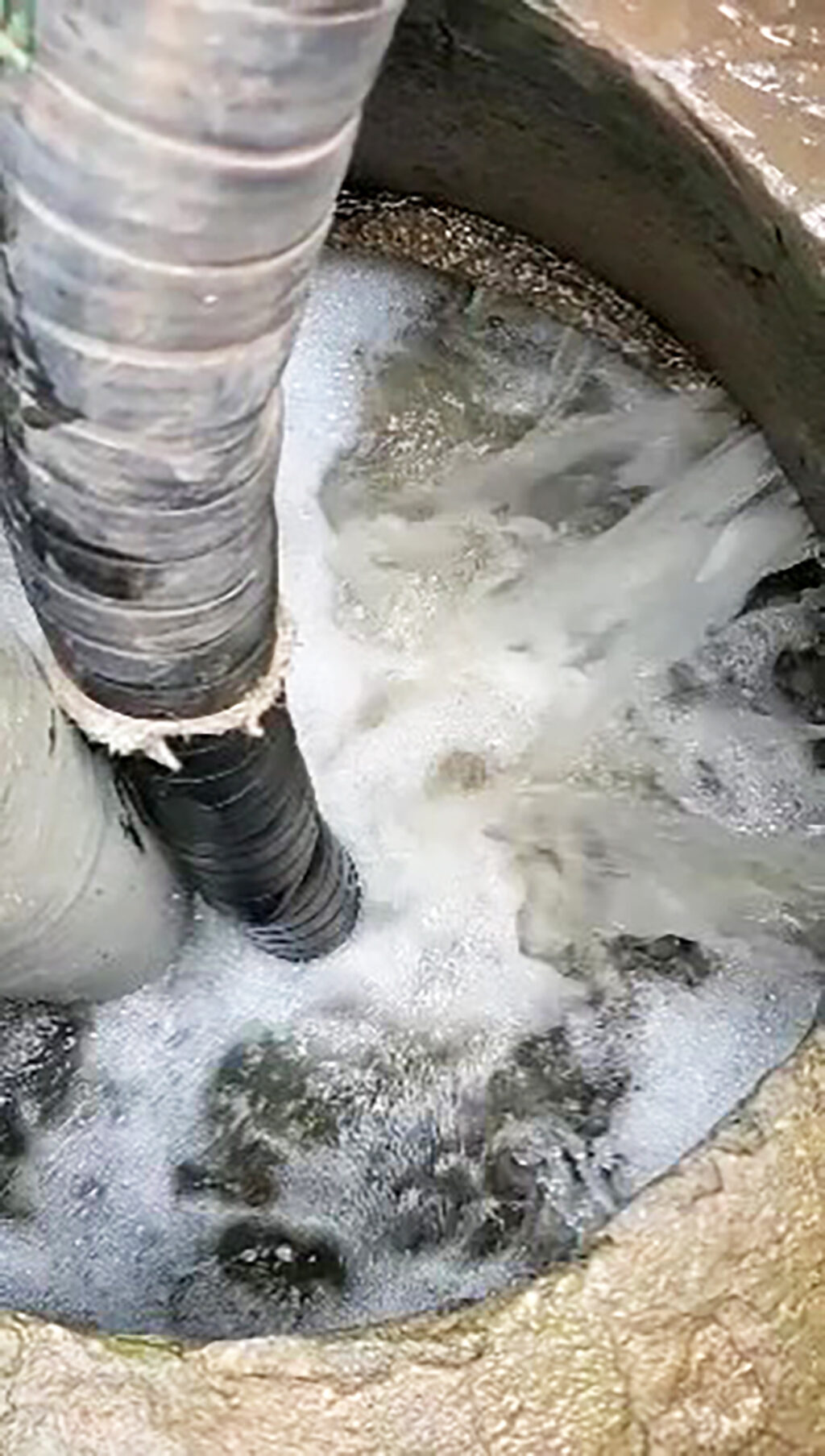
Infiltration of approximately 40 gallons of groundwater per minute -
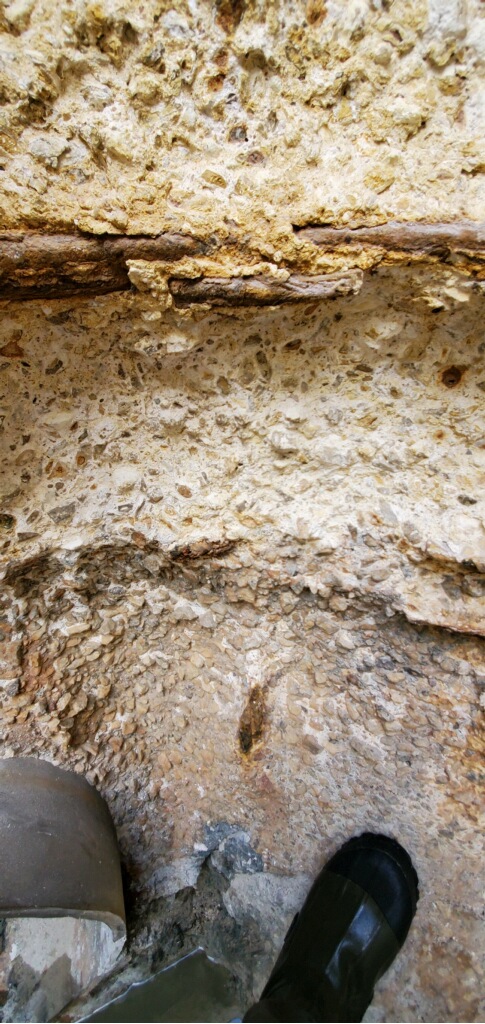
Critical conditions of the diversion box showing severe erosion from H2S gas and strong flow -
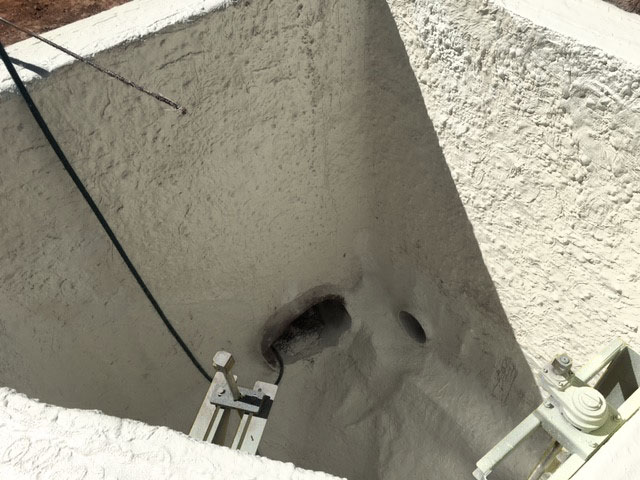
The final result, a fully rehabilitated diversion box
Additional life even for a new infrastructure
If you’ve decided to replace or build new infrastructure, coating all these structures with a protective polymer coating or lining is suggested. For epoxy, the industry standard is to coat new precast and formed concrete with 125 mils (1/8-inch). Be certain to test the adhesion of each product you are considering and compare them to one another. Our data and testing support that coatings with the greatest adhesion values will provide the longest service life. It is also recommended to include this specification on all new assets, thereby passing the protective coating cost to the builder and developer and not to the utility itself. This is important because we’ve documented new concrete manholes in severe wastewater conditions, deteriorating in less than five years of service. Typically, the wrong coating system, or no coating at all, is the root cause of this issue.
Utilities should engage in asset management practices across all infrastructure sectors, including wastewater, to prioritize funding and extend their assets’ lifespan. Asset management should include continuous assessment of the assets’ condition and prioritize rehabilitation or replacement decisions based upon data and criteria specific to your system.
Are you interested in learning more about this topic?
Register for our upcoming webinar presented by JB Conant, AMPP Certified Coatings Inspector
Wastewater Infrastructure – When to Replace or Rehabilitate
Wednesday, May 26, 2021 | 12:00 – 1:00 PM EST
